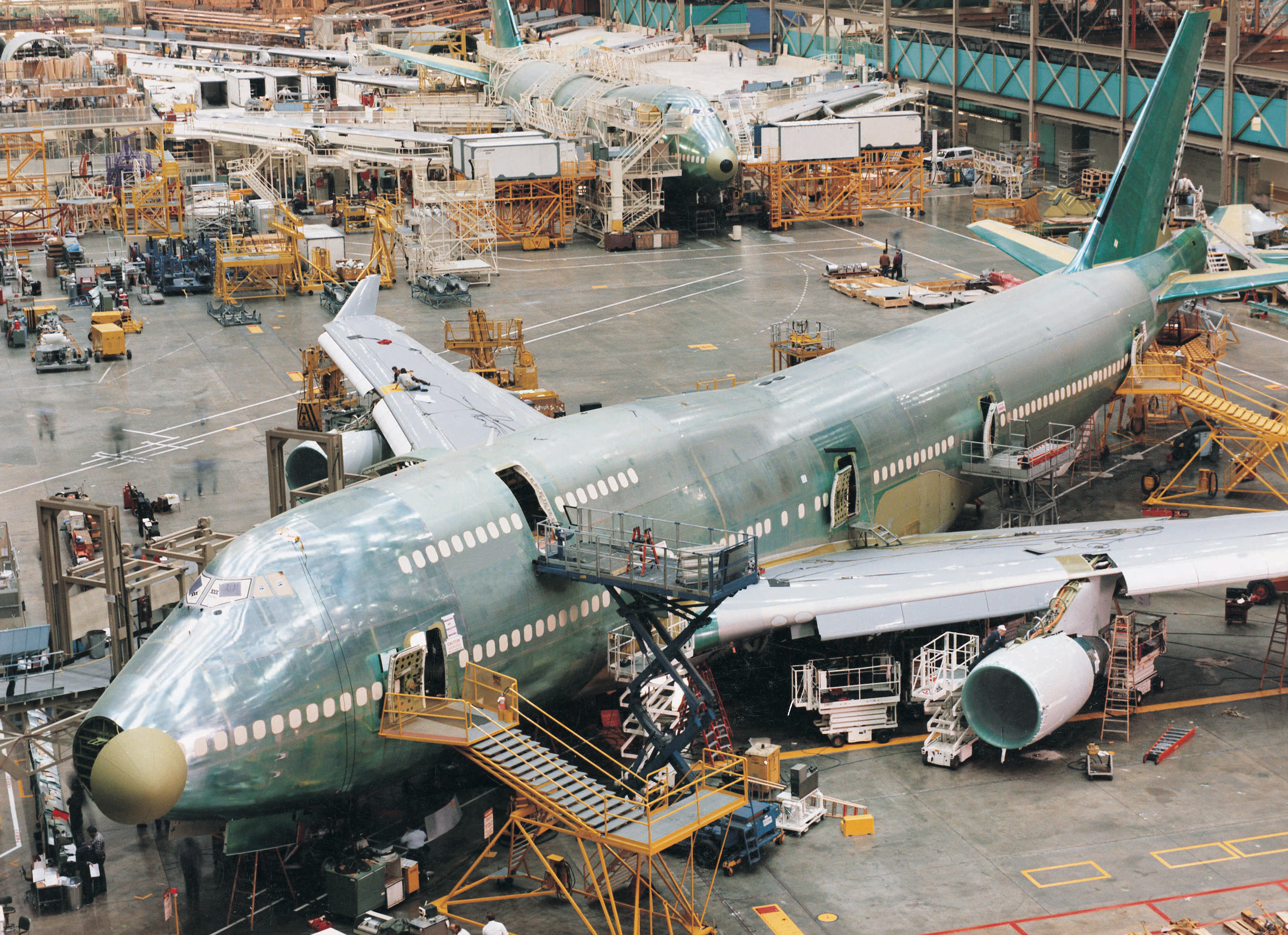Air Lease (AL +0.08%) notched its highest-ever quarterly aircraft investment totals during a busy second quarter. The aviation services company, which purchases fuel-efficient narrow-body and wide-body jets and leases them to airlines, also posted a double-digit gain in revenue and vigorous growth in its order book over the last three months. Below, let's review the crucial details from the earnings report, which was filed on Aug. 8. Note that all comparative numbers are presented against those of the prior-year quarter.
Air Lease: The raw numbers
| Metric | Q2 2019 | Q2 2018 | Change |
|---|---|---|---|
| Revenue | $471.4 million | $397.8 million | 18.5% |
| Net income | $124.0 million | $115.2 million | 7.6% |
| Diluted earnings per share | $1.10 | $1.04 | 5.8% |
Data source: Air Lease Corporation.
What happened at Air Lease this quarter?
- Despite ongoing production delays from Airbus, and the grounding of Boeing's 737 MAX, Air Lease took delivery of 17 aircraft, representing a record $1.6 billion in asset investments.
- Air Lease ended the quarter with the placement of 97% of its order book on long-term operating leases for aircraft to be delivered through 2020, and 77% lease placement for aircraft delivering through 2021.
- Average fleet age dipped 0.1 years to 3.7 years, while the company's weighted-average remaining lease term improved by 0.4 years to 7.2 years.
- At quarter-end, Air Lease counted 754 aircraft in its portfolio, between owned, managed, ordered, and optioned aircraft, against 758 in the prior year.
- Total committed rentals increased by $3 billion to $28.7 billion. This number is made up of $13.5 billion in committed minimum rental payments from owned aircraft and $15.2 billion in future minimum rental payments related to aircraft on order.
- In June, the company signed a memorandum of understanding (MOU) with Airbus to purchase 27 A321XLR aircraft, 23 A321neo aircraft, and 50 A220 planes, with options to acquire another 25 A220s. Air Lease also signed an MOU with Boeing to convert purchase orders on 15 of the grounded 737 Max aircraft to five 787-9 aircraft.
- Interest expense as a percentage of total flight equipment rental rose by 210 basis points to 22.8%, as debt balances increased by roughly $1.4 billion to $12.9 billion.
- Depreciation expense climbed by 20.4% to $171.7 million, while selling, general, and administrative expenses (SG&A) rose by 29.4% to $27.8 million. These operational expenses, along with the higher interest expense, were primarily responsible for net income growth that only reached the high single digits, despite a near-19% advance in revenue.

Image source: Getty Images.
What management had to say
In prepared remarks during the company's earnings conference call, executive chairman Steve Udvar-Hazy reassured investors that despite a number of external challenges, Air Lease still believes the current economic environment favors growth for airlines -- and by extension, its own business:
Air Lease is delivering outstanding operational and financial performance as we build our best-in-class fleet on long-term leases. We now have over 100 airline customers. And as of mid-July, we had already surpassed 300 aircraft in our own fleet and more than $20 billion in total assets -- two fantastic milestones for our company after nine short years.
Aviation is a dynamic business given its global nature. As always, there are currently many variables at play with trade, currencies, rates, and [original equipment manufacturer] delays, just to name a few. But, broadly speaking, our airline customers are generally healthy as a result of ongoing passenger traffic trends, relatively low interest rates, and manageable energy prices. Labor, of course, does prove troubling for some airlines, particularly in Europe. But this is nothing that we've not seen before. And, despite ongoing geopolitical dialogue, we continue to see ongoing demand from airlines from all regions of the world.
Looking forward
Because the air leasing industry is quite cyclical, investors tend to treat lessors with caution, even in periods of healthy growth. My Motley Fool colleague Reuben Brewer recently fleshed out the rationale behind such caution here. Indeed, despite crisp financial performance, shares of Air Lease currently trade at a discount of 18% to book value, a phenomenon that larger competitor AerCap is also experiencing. As Air Lease's plane investments and earnings power continue to improve, investors who can stomach periodic volatility may find value in the cheap market pricing of its shares.








